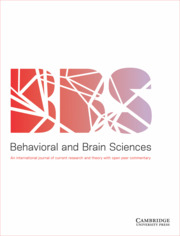Crossref Citations
This article has been cited by the following publications. This list is generated based on data provided by Crossref.
Schulkin, Jay
2007.
Autism and the amygdala: An endocrine hypothesis.
Brain and Cognition,
Vol. 65,
Issue. 1,
p.
87.
Feldman, Ruth
Gordon, Ilanit
Influs, Moran
Gutbir, Tamar
and
Ebstein, Richard P
2013.
Parental Oxytocin and Early Caregiving Jointly Shape Children’s Oxytocin Response and Social Reciprocity.
Neuropsychopharmacology,
Vol. 38,
Issue. 7,
p.
1154.
Garfield, Lindsey
Watson-Singleton, Natalie N.
Mathews, Herbert L.
and
Janusek, Linda Witek
2024.
Protocol for a pilot study assessing a virtual mindfulness intervention for postpartum African American women.
Brain Behavior and Immunity Integrative,
Vol. 6,
Issue. ,
p.
100060.


